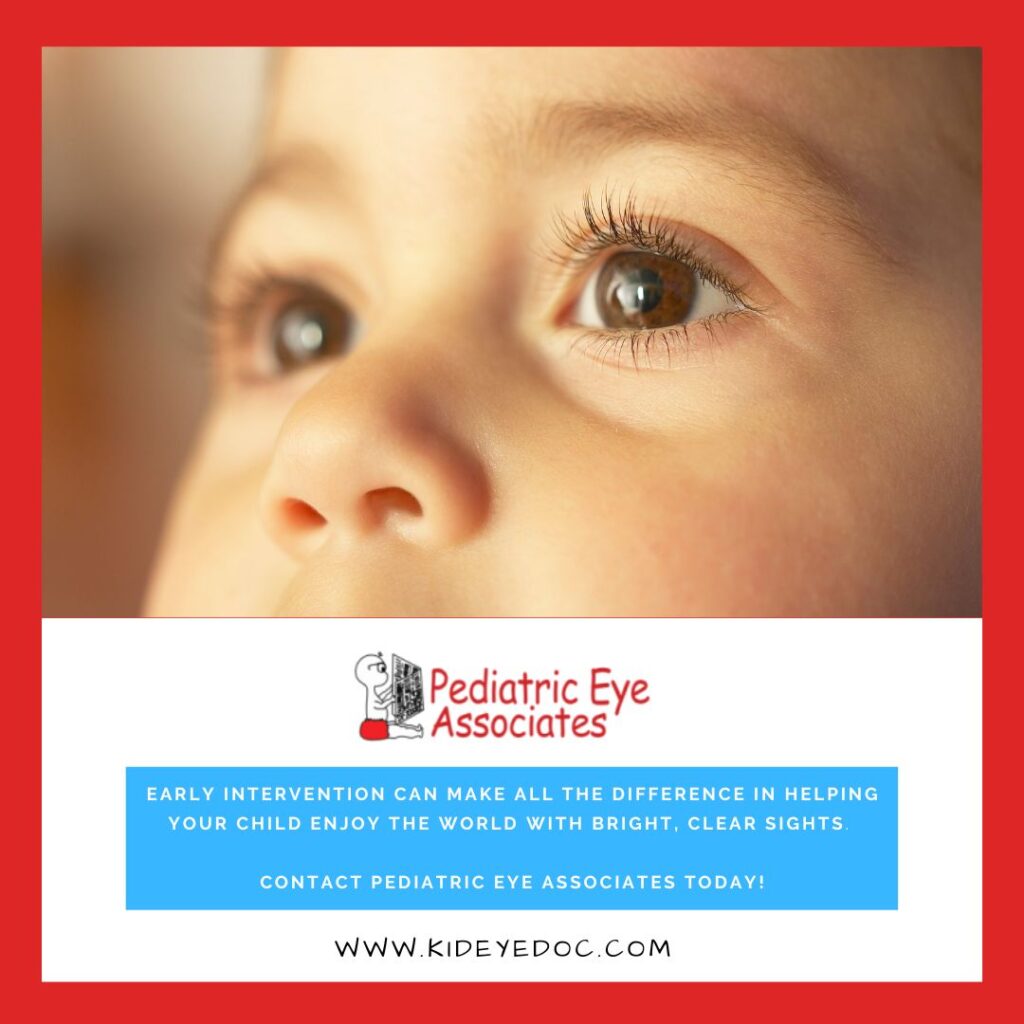Are you noticing a drooping eyelid, difficulty moving an eye, or unusual head positioning in your child? Unfortunately, these can be signs of underlying conditions like pediatric nerve palsies or ocular nerve disorders.

While these terms may sound complex, understanding the basics can empower you to seek the right treatment and support for your child.
In this blog post, we will explain these conditions in clear, simple terms, outlining causes, symptoms, and treatment options to help you take the first steps toward supporting your child’s eye health.
Understanding pediatric nerve palsies and ocular nerve disorders
Ocular nerve disorders in children refer to conditions where the nerves that control the muscles around the eye are damaged or not functioning correctly. This can lead to issues in eye movement, alignment, or vision.
Pediatric nerve palsy specifically affects the cranial nerves, which are crucial in controlling eye movements. When one of these nerves doesn’t work as it should, it can lead to symptoms that impact a child’s vision and quality of life.
There are three main cranial nerves that control eye movement:
- Third cranial nerve palsy – Responsible for moving the eye up, down, and inward.
- Fourth cranial nerve palsy – Controls the eye’s downward movement.
- Sixth cranial nerve palsy – Responsible for moving the eye outward, away from the nose.
Each type affects eye function in a unique way, and understanding these distinctions can help you spot early symptoms in children.
Causes of pediatric nerve palsies and ocular nerve disorders
Pediatric nerve palsies or ocular nerve disorders can arise from a variety of causes, including:
- Congenital factors
Some children are born with nerve palsies due to developmental issues in the womb. In such cases, nerve function may be impaired from birth, and symptoms may appear in early infancy.
- Infections
Certain infections, such as viral or bacterial meningitis, can damage the cranial nerves. When an infection affects the nervous system, it can compromise nerve function.
- Trauma
Head injuries from accidents, falls, or sports activities can injure the nerves that control eye movements. This can then lead to temporary or permanent palsies.
- Neurological conditions
Rarely, conditions like brain tumors or aneurysms may exert pressure on cranial nerves, affecting their function.
Each case is unique, so it is essential to work with a pediatric ophthalmologist or neurologist to determine the specific cause of your child’s condition.
Recognizing the symptoms of nerve palsies or ocular nerve disorders
Early identification of symptoms is vital for effective treatment. Signs of pediatric nerve palsies or ocular nerve disorders can vary depending on which nerve is affected.

Here’s what to watch for:
- Difficulty moving the eye: If you notice one eye that doesn’t seem to follow objects or move as freely, it could be a sign of nerve palsy.
- Double vision: Children may complain of seeing double, or you may notice unusual head tilting as they attempt to align their vision.
- Eye misalignment (Strabismus): If one eye consistently drifts outward or inward, this could indicate nerve involvement.
- Drooping eyelid (Ptosis): A drooping eyelid can be associated with third cranial nerve palsy, affecting the eye’s ability to open fully.
- Head tilting or turning: Children may adopt unusual head positions to compensate for misaligned vision, often tilting or turning the head to reduce double vision.
Recognizing these symptoms early and seeking medical advice can be crucial in managing the condition and preventing secondary complications, such as vision loss.
Diagnosing pediatric nerve palsies or ocular nerve disorders
Diagnosis begins with a detailed medical history and a thorough eye examination. Your child’s eye doctor may conduct several tests to assess eye movement, alignment, and nerve function. Tests may include:
- Visual acuity test
- Ocular motility test
- Imaging studies
Treatment options for pediatric nerve palsies or ocular nerve disorders
Treatment for ocular nerve disorders often depends on the severity and underlying cause of the condition. Fortunately, many treatment options can improve symptoms and support normal eye function. Here are some of the most common options:
- Observation
In mild cases, doctors may adopt a wait-and-see approach. Some pediatric nerve palsies, particularly those caused by minor trauma or viral infections, can resolve on their own over time.
- Patching and eye exercises
Covering one eye or performing eye exercises can help strengthen weaker muscles and improve alignment for children with mild strabismus or double vision.
- Prism glasses
Special glasses with prism lenses can alleviate double vision, making it easier for children to see comfortably.
- Surgery
In cases where the nerve palsy is significant and causes persistent vision issues, eye muscle surgery may be necessary. This procedure adjusts the muscles around the eye to improve alignment and function.
- Neurological interventions
If a brain tumor or other neurological condition is causing the nerve palsy, additional treatments may be necessary. These might include surgery, medication, or other specialized therapies to address the root cause.
Support and management tips for parents and children
While managing an ocular nerve disorder can be challenging, there are several ways to support your child’s eye health and development:
- Encourage consistent use of corrective lenses
If your child has been prescribed prism glasses or patching, make sure they wear them as recommended. Consistent use can significantly improve outcomes.
- Adapt home and school environment
Make sure your child’s environment is comfortable and accommodates any vision limitations. For instance, seating them close to the board in school or providing magnified learning materials can help them stay engaged in the classroom.
- Promote eye exercises at home
If your doctor has recommended eye exercises, encourage your child to practice them regularly. Making these exercises a fun daily activity can improve compliance and outcomes.
- Build emotional support
Eye conditions can sometimes make children feel self-conscious. Reassure your child that their condition is manageable and remind them they are not alone. Encouraging a positive outlook can help them cope better.
- Maintain regular checkups
Pediatric ocular conditions often require ongoing monitoring to ensure symptoms are managed effectively. Attending regular follow-ups can help track your child’s progress and address any new symptoms early.
Pediatric Eye Associates: Helping Your Child See the World Clearly
With early detection and the right interventions, most children can lead full, active lives with minimal disruptions to their vision.

If you suspect your child may have an ocular nerve disorder or notice unusual eye movements or alignment, don’t wait to seek help.
Schedule an appointment with the best pediatric optometrist or ophthalmologist at Pediatric Eye Associates to get a clearer picture of your child’s eye health. Our pediatric eye doctor will help you throughout the process and explore the available treatment options.
Early intervention can make all the difference in helping your child enjoy the world with bright, clear sights. Contact us today.
The material contained on this site is for informational purposes only and DOES NOT CONSTITUTE THE PROVIDING OF MEDICAL ADVICE, and is not intended to be a substitute for independent professional medical judgment, advice, diagnosis, or treatment. Always seek the advice of your physician or other qualified healthcare providers with any questions or concerns you may have regarding your health.
